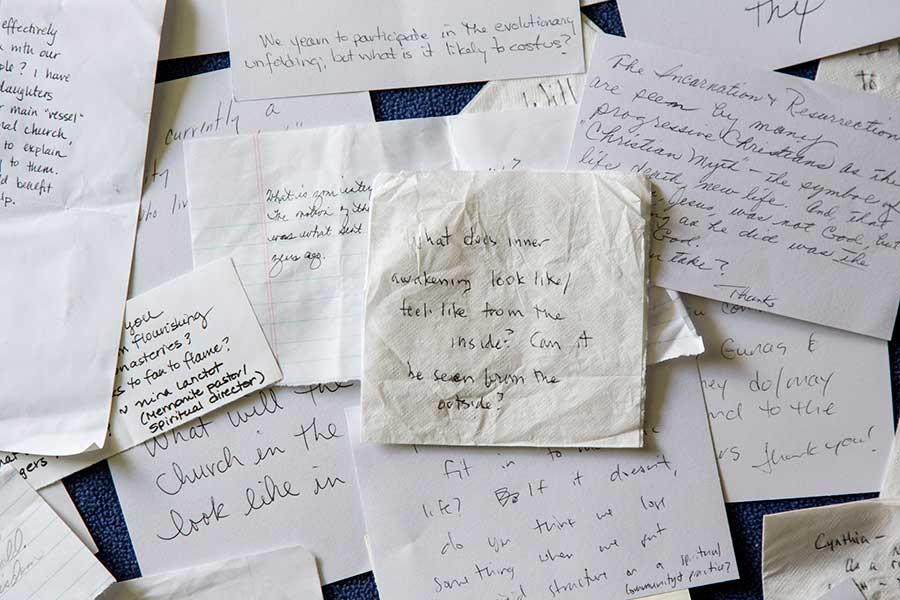Dear Cynthia,
I have a question about Centering Prayer and attention. In your books, you make a distinction between “attention” and “intention”-based practice. Coming from Buddhist background, I am familiar with attention-based methods such as following the breath or focusing on a koan (in Zen tradition). However, my practice has always gravitated towards “open awareness” methods (just sitting/Mahamudra/Dzogchen) and the specific “attention” practices were always seen as just a gateway to this pure awareness.
As I understand it, there is attention on awareness itself, noticing thoughts/sensations within this space and letting whatever content go. In Centering Prayer the emphasis is on the the “letting go”/kenosis aspect, however, we still notice the “thoughts” (using CP’s terminology) – otherwise we wouldn’t know when we’re lost in them, would we?
I find that, with mindfulness and acceptance – especially outside formal sitting sessions – letting go happens naturally and it looks to me exactly like “welcoming prayer” (without words). Am I correct to say, then, that these approaches are equivalent to each other? Or, to put it another way, what is the role of attention in CP? I find it also interesting to see how it relates to eyes open vs eyes closed during sitting. These questions arose for me, in part, from the confusion resulting in trying to marry Buddhism and Christianity in my head. CP has given me a valuable angle on my practice but much of Christian theological language confuses me. Perhaps I’m trying to understand it through Buddhist lens.
I would be grateful for your clarification.
With blessings,
Pawel
Dear Pawel,
I appreciate your subtle distinction here. But as far-fetched as it may seem, Centering Prayer does not even practice open awareness as it is typically understood in Buddhism (ie., being aware of consciousness itself as the “open sky” upon which thoughts are passing by like clouds). Even this is too much attention to the object. Instead, in Centering Prayer one practices the pure surrendering of separated (witnessing) consciousness back into its original matrix. If you want to look at it this way, con-sciousness (literally, “with-knowing” gives way to simple “sciousness.” The viewing platform temporarily dissolves (“Like pieces of cloud dissolve in sunlight” says Rumi), and the emphasis is on pure self-donation. Neurologically, this shows up as a discernible “drop.”
I know there’s some confusion around this point even among Centering Prayer practitioners due to an influential early metaphor by Thomas Keating in which he compared thoughts during meditation to boats floating down a river and consciousness as the river itself; the proper Centering Prayer stance, he says, is as the diver sitting on the riverbed. But he doesn’t QUITE say that the diver is WATCHING the river, though the teaching is often interpreted that way), and it’s clear that in the ensuing 30 years as Keating has continued to fine-tune his teaching around this key point, that he does not see Centering Prayer as an open awareness practice. It’s the next step beyond that, into “pure receptivity,” as he calls it.
So the short answer is that attention as we normally understand it (volitional focus on an object) plays no role in Centering Prayer. But I think the truth of the matter is that CP is actually working with a different configuration of attention: no longer in subject/object or linear mode, but as a 3-dimensional field of vibrant, objectless awareness in which knowing (‘sciousness’) goes on beyond the modality of CON-sciousness. In this state, It becomes possible to be deeply aware within and through that whole field without the need for a specific object of attention. The state is paralleled in certain aspects of dzogchen, but from a different starting point and with a different spiritual valuation.
I hope this helps…. We are indeed treading on subtle ground here—almost walking on air.
Blessings,



